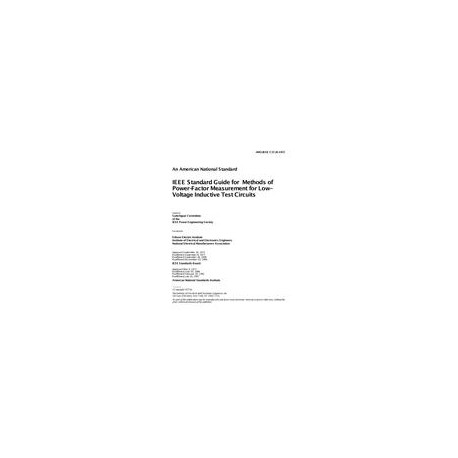Cart
0
Product
Products
(empty)
No products
To be determined
Shipping
$0.00
Total
Product successfully added to your shopping cart
Quantity
Total
There are 0 items in your cart.
There is 1 item in your cart.
Total products
Total shipping
To be determined
Total
New
Reduced price!
 View larger
View larger
 View larger
View larger
IEEE C37.26-1972
M00139301
New product
IEEE C37.26-1972 IEEE Standard Guide for Methods of Power-Factor Measurement for Low-Voltage Inductive Test Circuits
standard by IEEE, 06/21/1972
Full Description
Scope
This standard describes three methods used to measure the power factor in 60 Hz inductive low-voltage (1000 volts and below) test circuits. Similar methods may apply at other frequencies. These methods are:1) Ratio method;2) dc decrement method;3) Phase relationship method;These preferred methods are shown in Table 1.Purpose
The purpose of this standard is to recommend methods of measuring power factor for inductive test circuits by such means as oscillographic records, so that the preferred method, giving the greatest accuracy, is recommended for any particular circuit.Abstract
New IEEE Standard - Superseded.Methods used to measure the power factor in low-voltage test circuits are covered. Since the power factor measurement for high-capacity test circuits is particularly difficult, and different methods may yield different results, the methods that are least likely to yield errors are recommended for particular circuit conditions. The ratio method is recommended for fast clearing devices that may have total interruption times of 0.5 cycle or less. The DC decrement method is recommended for circuits with a 30% power factor or less when the device to be tested interrupts at a point in time more than 0.5 cycle from the initiation of the current. The phase relationship method, using current and voltage waves, is recommended for circuits having power factors over 30%.In stock

